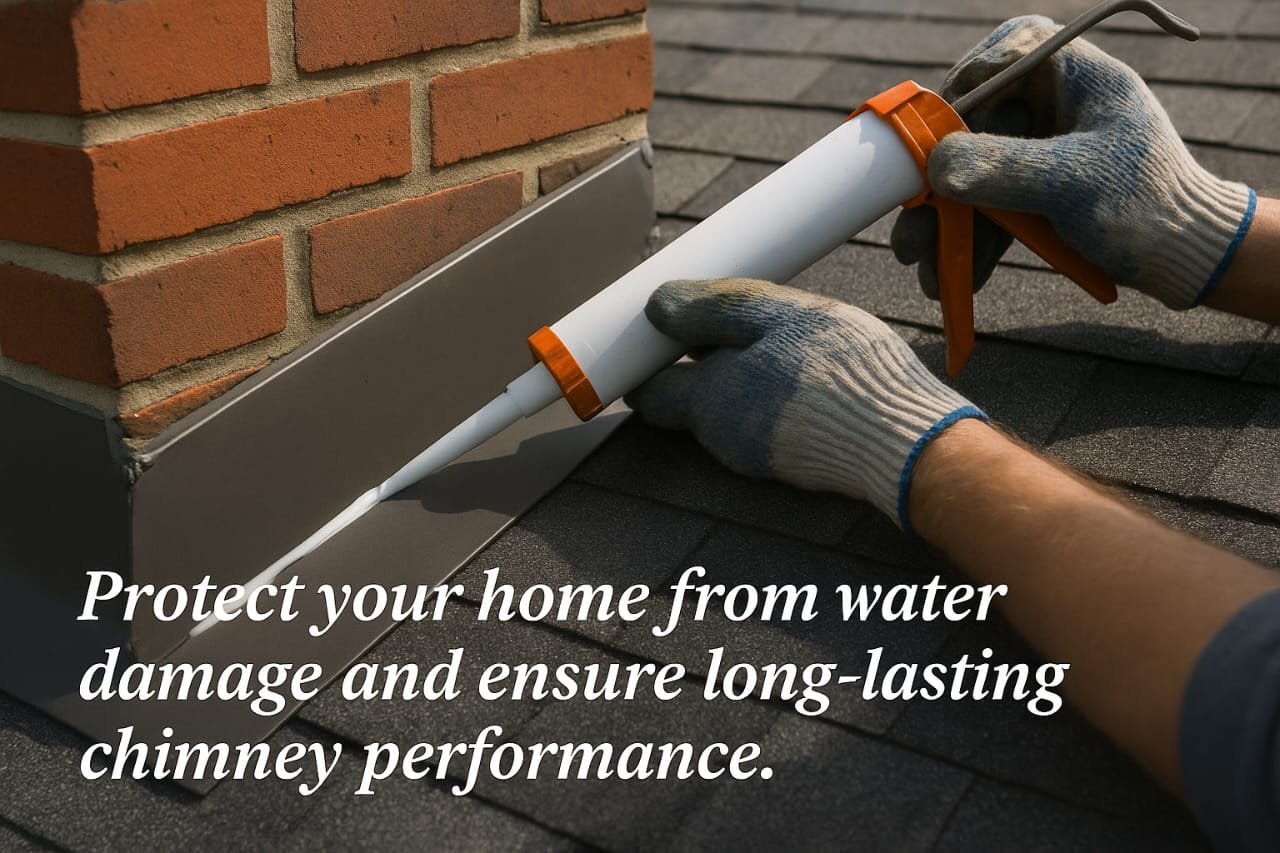If you’ve ever dealt with mysterious water stains on your ceiling or dreaded puddles after a big storm, you might be surprised to learn that the culprit could be your chimney. More specifically, it’s often not the bricks or the mortar, but a sneaky little detail called flashing that’s to blame. Chimney Flashing Repair might sound like just another item on a home maintenance checklist, but it’s actually one of the most important barriers standing between your cozy living room and an unexpected indoor rainstorm. Ignoring chimney flashing repair is like leaving your front door slightly open during a downpour — sooner or later, water finds a way in.
How Chimney Flashing Works: The Unsung Guardian
Before we get into the nitty-gritty of why chimney flashing repair matters so much, let’s take a step back and talk about what flashing actually does. Flashing is the thin strip of metal (sometimes rubber or another waterproof material) that wraps around the base of your chimney where it meets the roof. Picture it as a shield, guiding water away from the vulnerable seams and cracks where two very different building materials meet.
Over time, with rain, snow, wind, and even that blazing summer sun beating down, this protective barrier can crack, lift, or rust. Once that happens, water has a direct path right into your attic or living space. The tricky part is, you may not notice the problem until it’s too late — water damage often starts small and hidden, gradually leading to bigger headaches like mold, rotting wood, or even structural issues.
Just like you wouldn’t want a slow leak under your sink going unnoticed, ignoring chimney flashing is a recipe for bigger, costlier issues down the road. That’s why regular roof flashing inspection is so important for every homeowner. It’s not just about patching up leaks — it’s about keeping your home dry, safe, and comfortable year-round.
Warning Signs: When Chimney Flashing Needs Your Attention
The trouble with chimney flashing is that it’s easy to forget about — until there’s a problem. So, what should you watch for? Here are a few red flags that mean it’s time to take a closer look at your chimney’s defenses:
- Water stains on ceilings or walls near the chimney, especially after rain.
- Dampness or musty smells in the attic or near the fireplace.
- Visible rust, cracks, or gaps in the metal flashing around your chimney.
- Loose or missing shingles right next to the chimney base.
- Crumbled mortar or loose bricks, which can make the problem worse.
If you notice any of these clues, don’t brush them off. Water is persistent and will always find the easiest way inside. The sooner you address the issue, the less likely you’ll face major repair bills or unhealthy mold growth later on.
“A small leak ignored today can become tomorrow’s big disaster. Stay ahead of water damage by keeping your chimney flashing in check.”
Chimney Flashing Repair: Comparing Proactive vs. Reactive Approaches
Now, let’s talk strategy. When it comes to chimney flashing repair, you have two basic options: wait until there’s a visible leak and scramble to fix it, or schedule regular checks and fix small issues before they turn into major ones. The table below lays out the key differences between these approaches:
| Approach | Pros | Cons |
|---|---|---|
| Proactive (Scheduled Inspection & Early Repair) | Prevents costly water damageExtends roof lifespanPeace of mind during storms | Requires some planningSmall upfront repair costs |
| Reactive (Fix Leaks When They Appear) | No action until a problem is obvious | Higher repair billsPotential for mold/structural damageStress of urgent fixes |
As you can see, taking care of chimney flashing before trouble starts is a lot less stressful (and usually more affordable) than dealing with water damage after the fact.
DIY or Call a Pro? Making the Right Choice for Chimney Flashing Repair
Some homeowners love to tackle repairs themselves, but chimney flashing is one of those jobs where experience really matters. If you’re comfortable climbing ladders, know your way around roofing materials, and are confident in spotting subtle signs of damage, you might be able to handle a simple patch or seal.
However, most people are better off calling a professional. Roofing pros have the right tools, materials, and know-how to spot hidden problems and make sure repairs will actually last. Plus, working on a roof can be dangerous if you’re not experienced or properly equipped.
Whether you choose to DIY or hire a pro, what matters most is not putting off repairs. Even tiny gaps or cracks in flashing can let in surprising amounts of water during a heavy downpour.
Conclusion: Protect Your Home with Timely Chimney Flashing Repair
Chimney flashing may not be the most exciting part of your house, but it’s absolutely essential for guarding against water damage and roof leaks. By keeping an eye out for warning signs, scheduling regular inspections, and addressing small issues promptly, you can avoid major headaches in the future. Don’t let a little sheet of metal decide the fate of your living room — make Chimney Flashing Repair a top priority in your home maintenance routine, and your roof (and wallet) will thank you.
Read More: Aurora Chimney Sweep


